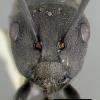Hello guys,
I'm from Bali, Indonesia and new to antkeeping.
You can check out my collection here.
I have no idea what species they are, i only know Polyrhachis Dives.
Please be kind and help me out.
![]()

Hello guys,
I'm from Bali, Indonesia and new to antkeeping.
You can check out my collection here.
I have no idea what species they are, i only know Polyrhachis Dives.
Please be kind and help me out.
![]()
Polyrhachis dives. I 5 Queens, 83 Workers. << This colony keep biting and pulling 2 of their queens from the nest, so i decided to get them out. P. Dives III and P. Dives IV.
Polyrhachis dives. II 1 Queen, 16 Workers. First egg February 12th 2019.
Polyrhachis dives. III 1 Queen, First egg May 15th 2019.
Polyrhachis dives. IV 1 Unfertilized Queen.
Hello from China!
Edited by ANTndonesia, February 19 2019 - 2:17 AM.
Polyrhachis dives. I 5 Queens, 83 Workers. << This colony keep biting and pulling 2 of their queens from the nest, so i decided to get them out. P. Dives III and P. Dives IV.
Polyrhachis dives. II 1 Queen, 16 Workers. First egg February 12th 2019.
Polyrhachis dives. III 1 Queen, First egg May 15th 2019.
Polyrhachis dives. IV 1 Unfertilized Queen.
oecophylla smaragdina, an amazing species that uses silk to make nests out of leaves. Also look for carebara diversa, a species with striking polymorphism. They are hard to get past the founding stage though.
Oecophylla aren't actually that hard to raise, you just need a fertile queen. As for the carebara, that's a little harder.
0 members, 1 guests, 0 anonymous users